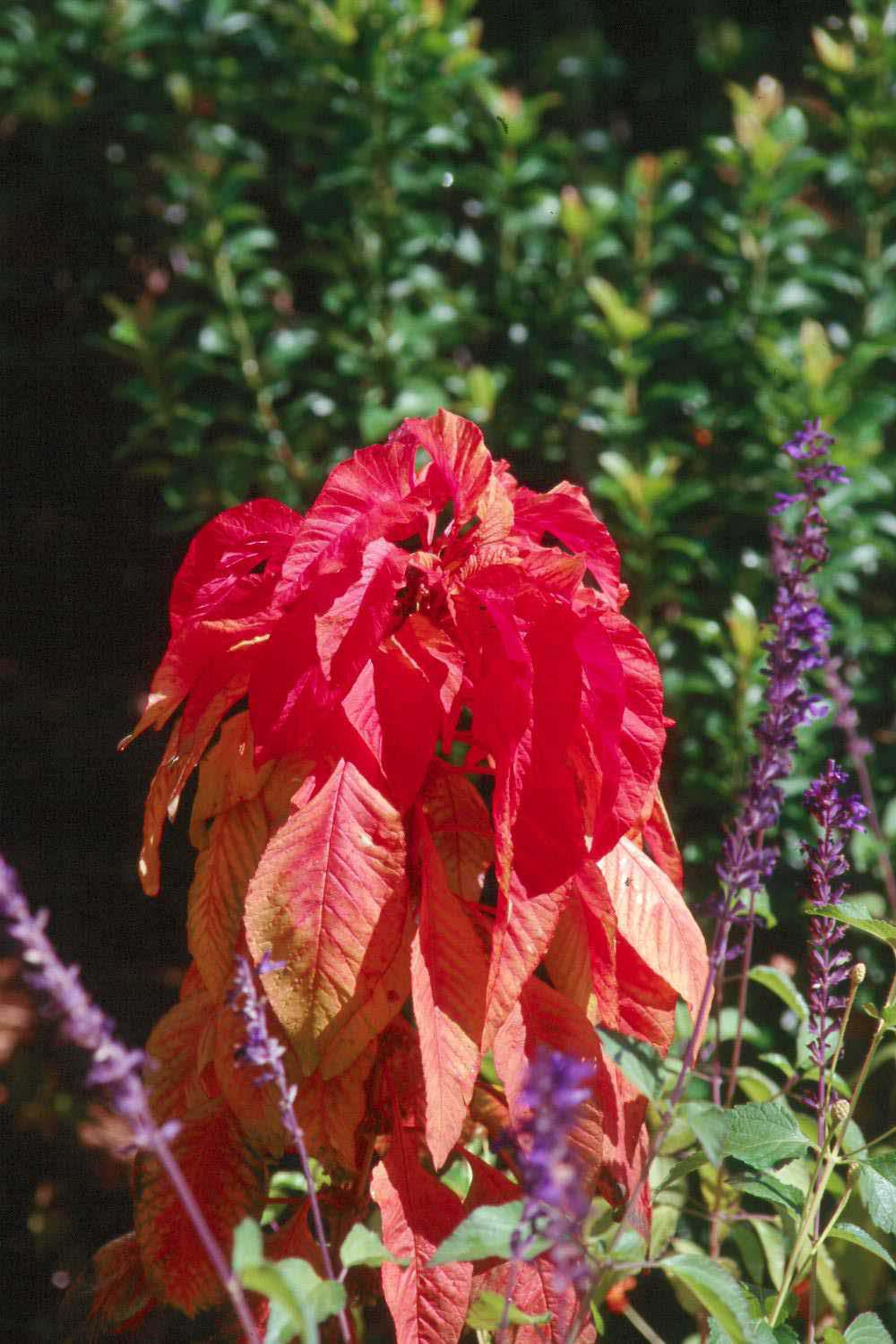Information Possibly Outdated
The information presented on this page was originally released on July 30, 2001. It may not be outdated, but please search our site for more current information. If you plan to quote or reference this information in a publication, please check with the Extension specialist or author before proceeding.
Summer poinsettia yields flashy color
By Norman Winter
MSU Horticulturist
Central Mississippi Research & Extension Center
The old fashioned looks often catch the eyes of new gardeners. Such was the case at the Truck Crops Branch Experiment Station last October during the Fall Flower and Garden Fest. One of the plants that kept visitors gawking was the summer poinsettia.
Botanically, the summer poinsettia is Amaranthus tricolor, also known as Joseph's Coat. Don't confuse it with the more common Joseph's Coat, Alternanthera ficoidea, which is closely related but much smaller in height and leaf-size. The Amaranthus tricolor is also known as Tampala, an all-green variety used as a spinach substitute in Third World countries.
It is not the green-type that wows gardeners but the brightly colored, uniquely variegated varieties like Flaming Fountain that give a tropical appearance. Native to Africa and Indochina, summer poinsettias are related to celosia and gomphrena. These annual bedding plants reach 2 to 4 feet tall. Though annuals, they can give perennial-like performance by re-seeding in the spring.
The leaves are brilliant shades of red, orange, yellow and green depending on the variety. Choose a site in full sun to achieve this bold color. Beds should be well-drained and organic-rich. These flashy plants resent waterlogged soils, so raised beds with a good layer of mulch to keep even soil moisture are ideal.
Plant crops in four to six week successions to give a special look of varying heights and color intensities. I am usually able to find nursery transplants in late spring, but seeding is a definite option. Seeds germinate in 10 to 14 days, and most need to be transplanted in two to three weeks. Space your plants or thin your seedlings to 18 inches apart.
Summer poinsettias are not heavy feeders. Simply side-dress with a light application of a slow-released fertilizer like a 12-6-6 one month after transplanting.
The tender, young leaves of the green types are eaten as spinach, so it is no surprise that some chewing insects think they are nutritious too, particularly when the plants are very young. Watch for insects and treat early if needed.
These plants are astoundingly fast growers, and it won't be long until you have 4-foot specimens worthy of a photograph. Summer poinsettias are grown for foliage but produce tiny flowers in stalkless clusters on leaf axils. The flowers go mostly unnoticed because of the showy foliage. Next spring, the young seedlings return, giving evidence it did indeed flower.
Some think that this plant is hard to use in the landscape, but I beg to differ. At the Experiment Station, we intermingled ours with bananas for a great look. They would also be excellent combined with elephant ears and cannas, or try them with castor beans or in large clusters between evergreen shrubs.
Summer poinsettias' leading varieties are Aurora, Early Splendor, Flaming Fountain and Molten Fire.



